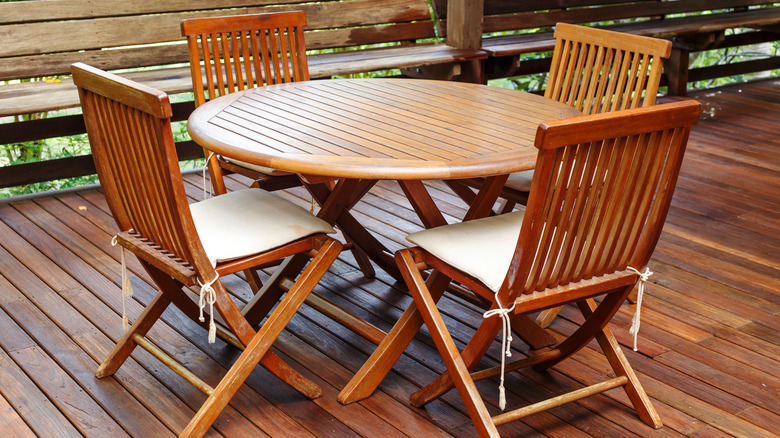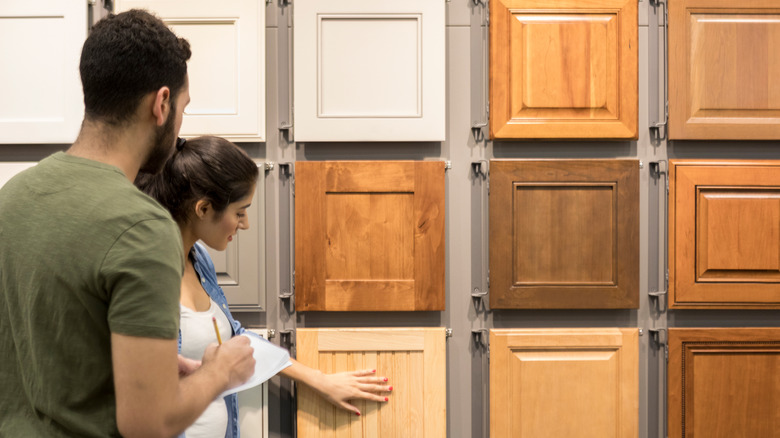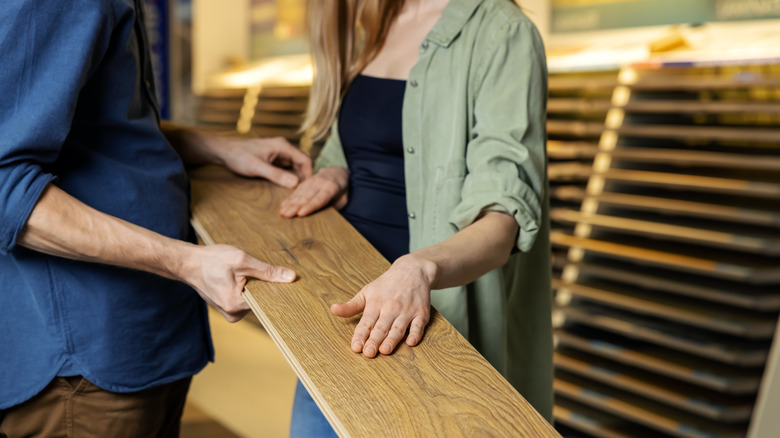The Hidden Disadvantages Of Teak Wood Furniture That You Need To Know About
All the way in South India, the world's largest living teak tree just celebrated 500 years around the sun. The tropical hardwood, known formally as Tectona Grandis, has breathed new life into some of our favorite furniture designs. It's easy to build with, resistant to decay, and has an aesthetic appeal that can be hard to match. Despite its benefits and popularity, however, teak wood also comes with its very own list of disadvantages, especially when it comes to the quality of wood and the surging prices.
Teak wood might be your go-to when it comes to curating furniture (or even keeping it clean), but it's not all rainbows and butterflies. In 2021, teak wood's market value reached a whopping $39.82 million, followed by $43.26 billion in 2022. By 2030, teak wood is expected to reach a market value of 83.76 billion dollars. Unfortunately, that likely means you've been spending exorbitant amounts of money, investing in low-quality wood, and falling victim to the prominent disadvantages of teak wood.
Teak wood is fairly expensive
Since teak wood is presumed to be premium quality wood, manufacturers sell them at a high price. For those of us who operate on a budget-friendly lifestyle, investing in teak wood might force you to spend exorbitant amounts of money. Additionally, the availability of teak wood is declining alongside its natural resource. If you're trying to achieve a bang for your buck, inexpensive alternatives for furniture include pinewood or plywood. That said, if you're willing to strain your wallet a bit, you may not have to replace your furniture for years to come.
Teak wood's high prices are also a product of political unrest, with South Asian countries like Myanmar and India referring to it as "conflict wood." Military regimes in South Asia use the production of teak wood to fund weaponry, income, and additional military aid, which is why many South Asian countries have called for an end to teak wood production. Moreover, finding authentic and high-quality teak wood is half the battle.
It's hard to find high-quality teak wood, to be honest
Believe it or not, many teak wood products are made from inauthentic wood. Manufacturers will pass off fake wood that's coated with teak oil as the authentic product, all the while convincing consumers that it contains the same ingredients as authentic teak wood. Purchasing inauthentic teak wood furniture may cause the wood to stain, rot, and decay much more quickly than the long-term sustainability of original teak wood. If you're set on purchasing teak wood furniture, it's best to have an expert available who's knowledgeable about the tree.
We know that buying quality wood isn't easy, which is why it's important to know exactly what you're looking for. Authentic teak wood can be identified by its distinctive color, a leathery smell, and a somewhat oily surface. Additionally, inquiring about the product's source can help you better identify authentic from inauthentic. Since teak wood is predominantly produced in South Asian countries, inquire with the retailer where the product was made.


